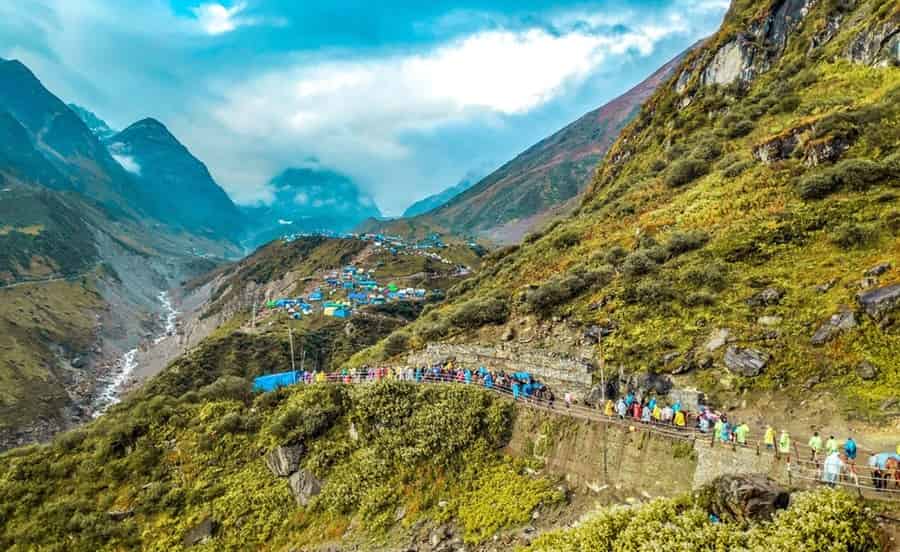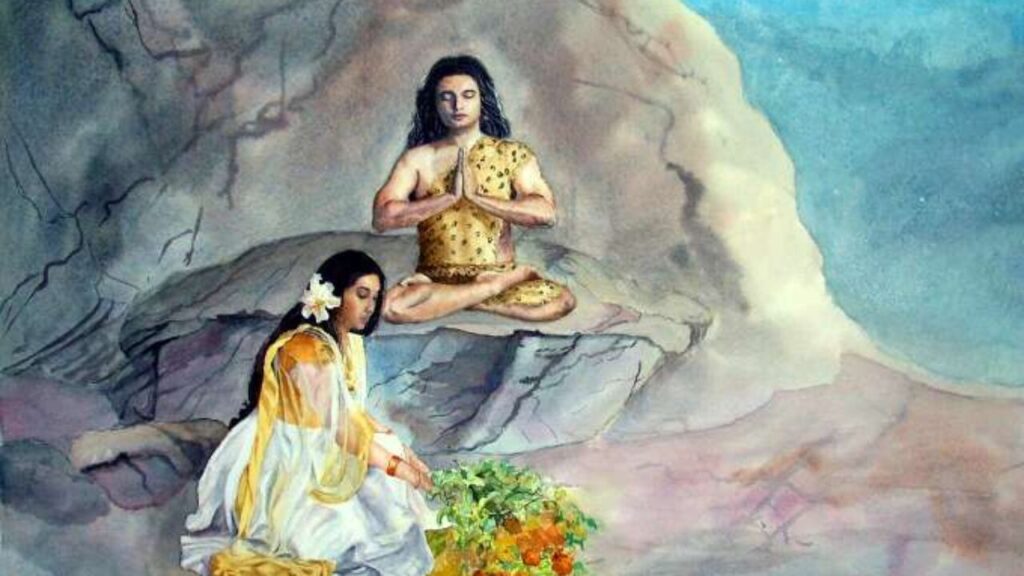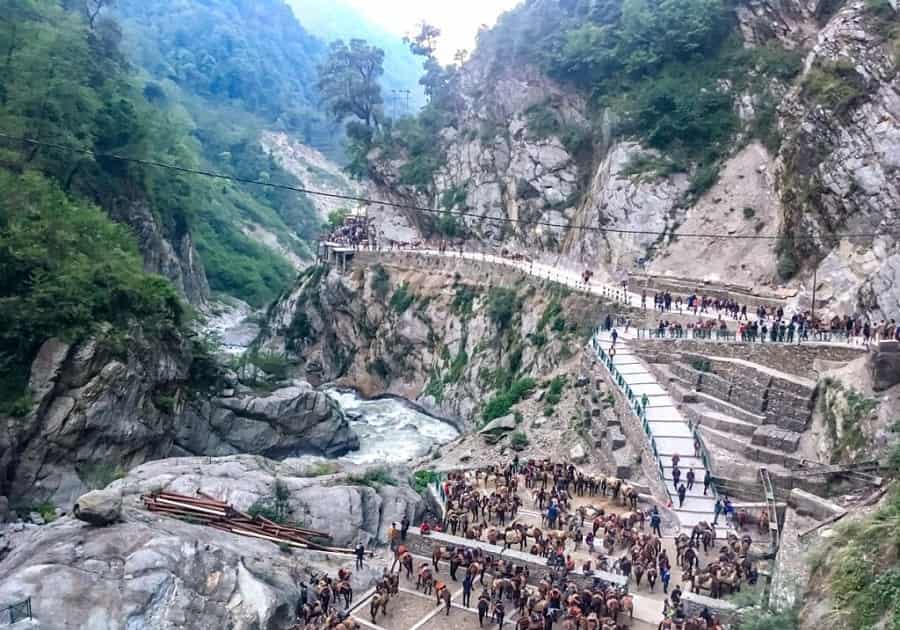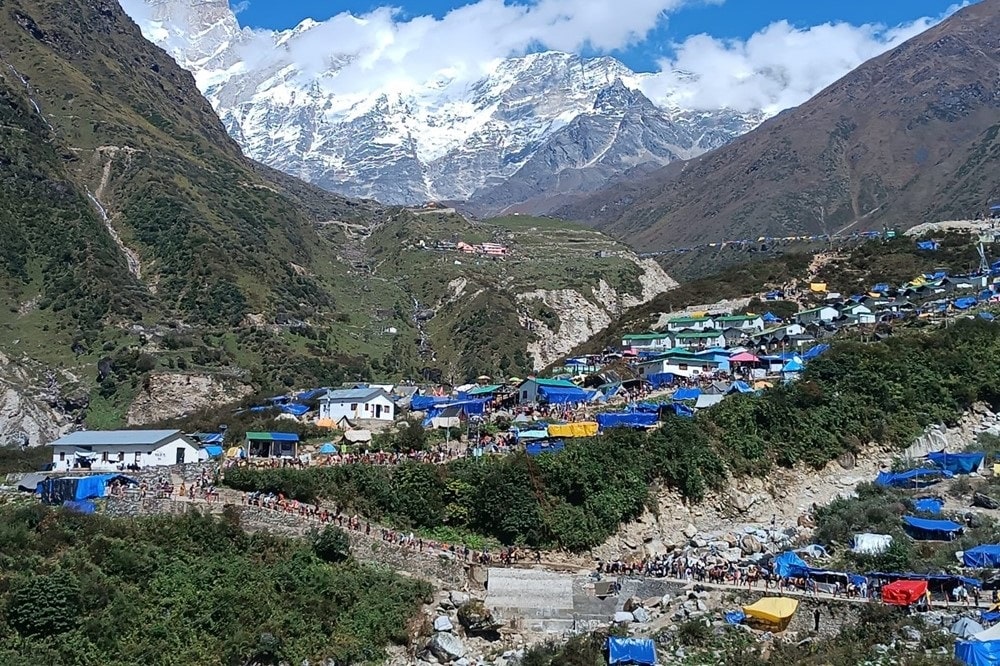Before reaching the divine abode of Kedarnath, every pilgrim must pass through Gaurikund, a place that blends natural beauty, mythology, and spirituality. Perched at around 6,000 feet in Uttarakhand’s Rudraprayag district, Gaurikund serves as the base camp for the Kedarnath trek. But beyond being a starting point, it is a sacred destination in itself — a place where legends of Lord Shiva and Goddess Parvati come alive, where steaming hot springs heal weary bodies, and where devotion flows as strongly as the Mandakini River.
In this blog, let us explore Gaurikund in detail, from its mythological significance to its natural beauty, the trek to Kedarnath, and everything a traveler must know about Gaurikund Kedarnath.

Mythological Significance of Gaurikund
To truly appreciate the mythological importance of Gaurikund, one has to journey through its stories, legends, and symbolism that connect it with Shiva, Parvati, and Ganesha. Each tale adds another layer of sanctity, making this place a destination where mythology breathes in the very air.
The Story of Parvati’s Penance
The most celebrated legend of Gaurikund is the story of Goddess Parvati’s meditation. According to ancient scriptures, Parvati, daughter of King Himavan, was determined to win the love of Lord Shiva, the ascetic god of destruction and meditation.
Shiva was lost in his tapasya (deep meditation), detached from worldly desires, residing in the icy peaks of the Himalayas. Parvati, however, was undeterred. She renounced the comforts of her palace and came to Gaurikund, a secluded and serene spot in the Garhwal Himalayas. There, she immersed herself in severe penance. She ate nothing but leaves, bore the harsh weather, and dedicated herself entirely to winning Shiva’s heart.

Her devotion moved even the gods. Legends narrate that the natural hot water spring of Gaurikund emerged as a blessing from the divine — so Parvati could bathe and sustain herself during her penance. The bubbling kund (pool) thus became a living witness to her unwavering determination.
Finally, her devotion bore fruit. Lord Shiva appeared, accepted her love, and later married her in Triyuginarayan Temple, not far from Gaurikund. This makes the place not only a site of penance but also a symbol of divine union.
The Tale of Ganesha’s Birth
Another legend intertwined with Gaurikund is the birth of Lord Ganesha, one of the most beloved deities in Hinduism.
It is believed that while at Gaurikund, Goddess Parvati created a boy out of the turmeric paste she used for her bath. This boy was her son — Ganesha. She placed him at the entrance of her dwelling to guard it while she bathed in the sacred kund.

When Shiva returned and tried to enter, Ganesha, unaware of who he was, stopped him. Angered by this, Shiva, in a moment of fury, severed the boy’s head. Parvati was devastated. To pacify her, Shiva replaced the boy’s head with that of an elephant, giving birth to the elephant-headed deity we now worship as Ganesha.
This legend ties Gaurikund with the very origins of Lord Ganesha, making it a place of immense significance in Hindu mythology. It is here that devotion, sorrow, and divine restoration intertwined, leaving behind an eternal tale.
Gaurikund as a Symbol of Feminine Strength
Beyond the specific legends, Gaurikund stands as a symbol of feminine resilience and devotion. Parvati’s determination to win Shiva’s love wasn’t about worldly desire but about the merging of Shakti (divine feminine energy) with Shiva (divine masculine energy). Her penance represents the power of persistence, the strength of will, and the purity of devotion.
In many ways, Gaurikund isn’t just a geographical site but a reminder of how determination and faith can alter destiny. It celebrates the feminine as a force that nurtures, perseveres, and eventually transforms the universe itself.
Rituals and Religious Practices
Because of its mythological importance, pilgrims who visit Gaurikund before embarking on the Kedarnath trek engage in several spiritual practices:
- Holy Bath in the Kund: The natural hot spring is considered sacred. Taking a dip here is believed to purify the soul and prepare the body for the challenging journey to Kedarnath.
- Offerings at Gaurikund Temple: Devotees visit the temple dedicated to Parvati, offering prayers for marital harmony, strength, and blessings.
- Remembering Ganesha: Since the place is linked to Ganesha’s birth, pilgrims also chant prayers for wisdom and safe passage before starting their trek.
These rituals are deeply rooted in the legends of the site and continue to make mythology a living tradition.

Gaurikund in Ancient Texts
References to Gaurikund appear in Puranic stories and local folklore. The Skanda Purana and other scriptures mention Parvati’s penance in the Himalayas to attain Shiva. Oral traditions of the Garhwal region also keep the stories alive, passing them from one generation to another.
This continuity of myth and memory ensures that Gaurikund is not just a place for pilgrims but also a place where ancient stories are still alive, told by priests, guides, and local residents to all who arrive here.
Spiritual Symbolism of Gaurikund
If one looks deeper, the myths of Gaurikund also carry spiritual symbolism:
- The Hot Spring – Symbolizes purification, healing, and the blessings of divine grace.
- Parvati’s Penance – Reflects the inner journey of a soul seeking union with the divine through discipline and faith.
- Ganesha’s Story – Teaches lessons about forgiveness, transformation, and the cycle of endings and new beginnings.
- Union of Shiva and Parvati – Represents the cosmic balance of energies — the yin and yang, the masculine and feminine, merging into completeness.
Thus, Gaurikund is more than a physical site; it’s a metaphor for inner devotion, discipline, and ultimate fulfillment.
Living Faith – Gaurikund Today
Even today, pilgrims believe that visiting Gaurikund is essential before starting the Kedarnath Yatra. The kund, though smaller now due to natural calamities, still holds immense reverence. Bathing in its waters is said to wash away sins and invite blessings.
For newlyweds, the site carries special meaning, as it celebrates the love and union of Shiva and Parvati. Many couples visit the Gaurikund Temple to seek blessings for a harmonious marriage. Parents also pray to Ganesha here for the well-being and wisdom of their children.
Why Gaurikund Remains Sacred
The mythology of Gaurikund continues to captivate because it is not just about gods and goddesses but also about values and emotions that remain timeless:
- Devotion and Patience through Parvati’s story.
- Sacrifice and Forgiveness through Ganesha’s tale.
- Union and Balance through the divine marriage of Shiva and Parvati.
It’s these universal lessons that make Gaurikund resonate with every pilgrim and visitor. Standing here, surrounded by the Himalayas, one doesn’t just hear myths but feels them etched into the landscape.
The Sacred Gaurikund Temple
The Gaurikund Temple, dedicated to Goddess Parvati, is a small but spiritually significant shrine. Pilgrims often visit the temple before embarking on the trek to Kedarnath to seek blessings for a safe journey. The temple is surrounded by serene landscapes and exudes a calm, devotional energy that resonates with every visitor.
The Hot Water Springs
One of the highlights of Gaurikund is its natural hot water spring. The spring is believed to possess healing properties and is considered sacred. Pilgrims traditionally take a holy dip in these waters before starting their trek to Kedarnath, symbolizing purification of the body and soul. Even in cold weather, the warm waters provide comfort and relief, making it a cherished experience.
Gaurikund – The Base of the Kedarnath Trek
Gaurikund is the last motorable point on the Kedarnath route. From here begins the 16–18 kilometer trek to the Kedarnath Temple. The path is filled with steep climbs, rocky trails, and breathtaking views of snow-capped peaks and the Mandakini River flowing alongside.
Pilgrims can choose to:
- Trek on Foot – The most traditional and spiritual way to reach Kedarnath.
- Hire Ponies or Palanquins (Palkis) – For those unable to trek long distances.
- Helicopter Services – Available from nearby locations like Phata and Guptkashi, though Gaurikund remains the classic route.
Natural Beauty of Gaurikund
Beyond its religious importance, Gaurikund is a place of enchanting natural beauty. Dense forests, cascading streams, and the melodious flow of the Mandakini River create a picturesque backdrop. During the trek, one can see rhododendron trees, alpine vegetation, and, in spring, colorful blooms that make the journey even more delightful.
Facilities at Gaurikund
Over the years, Gaurikund has developed into a hub for pilgrims with facilities such as:
- Rest houses and lodges for accommodation.
- Local eateries offering simple vegetarian meals.
- Shops selling pooja items, woolens, and trekking gear.
- Medical centers and check posts for the safety of travelers.
These amenities make it easier for pilgrims to prepare themselves for the demanding journey ahead.
Nearby Attractions
If you have time, explore these nearby attractions:
- Triyuginarayan Temple – Believed to be the wedding venue of Shiva and Parvati, located about 25 kilometers from Gaurikund.
- Guptkashi – A town with spiritual importance, housing the Vishwanath Temple and Ardhnarishwar Temple.
- Sonprayag – Located just a few kilometers before Gaurikund, it is believed to be the holy site where Lord Shiva and Parvati were married.
Best Time to Visit Gaurikund
The best time to visit Gaurikund is during the Kedarnath yatra season, which usually runs from May to October. The summer months offer pleasant weather for trekking, while the monsoon season should be avoided due to landslides and slippery trails. Autumn, from September to October, provides clear skies and stunning mountain views.
Why Gaurikund is Special
Gaurikund is not just a stop on the way to Kedarnath; it is a spiritual prelude to the divine journey. Its myths, hot springs, temple, and natural beauty create a sense of calm and reverence. Standing here, surrounded by mountains and myths, one realizes that this place is more than geography — it is a threshold between the earthly and the divine.
FAQs for Gaurikund, Kedarnath
- Where is Gaurikund located?
Gaurikund is located in Rudraprayag district, Uttarakhand, and serves as the starting point of the Kedarnath trek. - Why is Gaurikund famous?
It is known for its natural hot springs, the Gauri Temple, and as the official base for the Kedarnath Yatra. - What is the altitude of Gaurikund?
Gaurikund is situated at around 1,982 meters (6,500 feet) above sea level. - What is the spiritual significance of Gaurikund?
It is believed to be the place where Goddess Parvati meditated to win Lord Shiva’s hand in marriage. - How far is Gaurikund from Kedarnath?
Kedarnath is about 16 km uphill from Gaurikund, accessible by trek, pony, or helicopter (from nearby helipads). - Are there hot water springs in Gaurikund?
Yes, Gaurikund has natural hot water springs where pilgrims take a holy dip before beginning their trek. - Is there a temple in Gaurikund?
Yes, the Gauri Temple dedicated to Goddess Parvati is a major attraction for devotees. - What facilities are available in Gaurikund?
Pilgrims can find guesthouses, dharamshalas, shops, food stalls, and pony/palki services here. - When is the best time to visit Gaurikund?
May–June and September–October are the best months, aligning with the Kedarnath Temple opening. - How to reach Gaurikund?
It is well connected by road from Rishikesh, Haridwar, and Guptkashi. The nearest airport is Jolly Grant (Dehradun).


